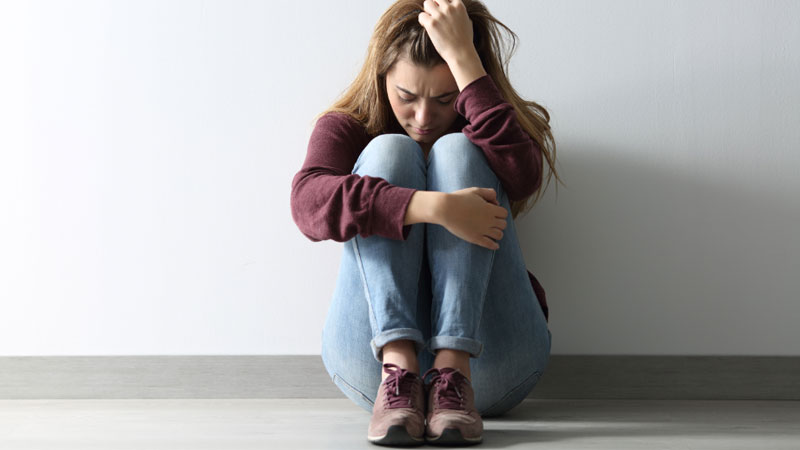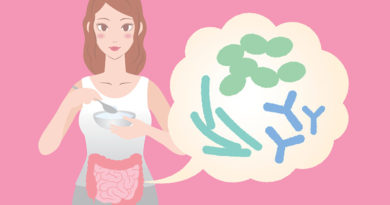Top 3 Debilitating Conditions Plaguing the Modern Day Woman
Women and men experience debilitating health conditions, but many of these affect both genders differently. Women have unique health needs, especially due to menstruation, pregnancy, menopause, and sexual and reproductive health. Here are three of the most debilitating conditions affecting women today.

Fibromyalgia
Fibromyalgia is a chronic illness that causes severe joint pain and fatigue. The pain associated with the condition comes and goes. There’s no known cause though genetic conditions and stress may be significant contributory factors.
Fibromyalgia affects more women than men. About 75 to 90% of the people diagnosed with fibromyalgia are women. It often affects women aged 20 to 50, rising with increasing age. Treating the condition can be challenging, with medications, lifestyle modifications, and therapy offering the best chance of improving symptoms.
Fibromyalgia Symptoms in Women
Fibromyalgia symptoms are more severe in women than men. Women have to deal with severe widespread pain, morning fatigue, IBS symptoms, and painful periods. The transition towards menopause also appears to worsen fibromyalgia symptoms. In many cases, the symptoms of menopause and fibromyalgia may be indistinguishable. The general symptoms affecting women include:
- Widespread pain, especially in trigger points. Common trigger points include; back of the head, shoulder tops, outer elbows, upper chest, hips and knees
- Severe fatigue
- Stiff joints and muscles in the morning
- Headaches
- Irregular sleep patterns
- Painful periods
- Irritable bowel syndrome
- Sensitivity to cold and heat
- Restless leg syndrome
- Fibro fog (difficulty concentrating)
- Vision problems
- Nausea
- Chest tightness
- Breathing difficulties
How to Treat Fibromyalgia
Fibromyalgia is a syndrome, and each woman may experience symptoms differently. Patients and doctors will work together to devise an individualized treatment regimen.
Fibromyalgia treatment typically involves over-the-counter analgesics for general pain relief. Doctors may also prescribe anti-seizure drugs and antidepressants. Natural approaches to therapy, including acupuncture, meditation, exercise, yoga, and massage therapy, have shown varying degrees of effectiveness. Stress reduction measures like group therapy and cognitive-behavioral therapy (CBT) are also quite helpful.
Women with fibromyalgia should adopt healthier lifestyle measures like eating right and working out regularly. Fibromyalgia is complicated and often difficult to treat or even diagnose. This situation can leave sufferers, especially women, confused and unsure of what to do. Leaning on people like healthcare providers, therapists, friends, and family can make it easier to overcome the condition and return to a normal life.
Osteoporosis
Osteoporosis is a debilitating condition that leads to more fragile bones as people get older. In severe cases, falls or mild stress like coughing or sneezing can cause a fracture. Most osteoporosis fractures occur in the wrists, spine, and hips. One in two women over 50 will experience an osteoporosis-related fracture in their lifetime.
Women have a lower bone density than men and lose bone mass rapidly as they age. The average Caucasian woman loses up to a third of her bone density between 20 and 80 years.
Other risk factors for osteoporosis include a family history of the disease and a small body frame. Reduced levels of estrogen and an overactive thyroid or parathyroid gland can also increase osteoporosis risk. Individuals with low dietary calcium intake and gastrointestinal disorders preventing nutrient absorption are also at higher risk of developing osteoporosis.
Osteoporosis develops slowly, and the early stages of bone loss may show no symptoms. Many people with osteoporosis don’t find out till they experience their first fracture after a minor incident.
Other symptoms of the condition include:
- Back pain as a result of vertebra fracture or collapse
- A stooped posture
- Decreased height with time
- Easily fractured bones
Osteoporosis Treatment
There’s no cure for osteoporosis. Treatment aims to help increase bone strength, prevent fractures, ease pain, and provide a better quality of life. Osteoporosis treatment involves bisphosphonates (alendronate, ibandronate, risedronate), hormone therapy, and natural remedies. An osteoporosis diet (rich in calcium, magnesium, protein, and vitamin D) and weight-bearing exercises also help prevent fractures and strengthen the bones.
Depression
Depression is the most prevalent cause of disability worldwide. While men and women encounter similar life challenges, women are twice as likely as men to be diagnosed with depression. Some reasons for this disparity include:
Hormonal Changes During Puberty
Mood swings from fluctuating hormones during puberty can increase female depression risk. Identity issues, peer pressure, and parental conflict may be contributing factors. Girls attain puberty before boys and are likelier to develop depression earlier, a trend that often continues throughout life.
Premenstrual Problems
Headaches, breast tenderness, irritability, and anxiety that occur premenarche can disrupt a girl’s life, causing depression. These symptoms can cause premenstrual dysphoric disorder, a type of depression.
Pregnancy and Postpartum Depression
Pregnant women experience hormonal fluctuations which significantly affect mood. New mothers may also find that they can’t control their emotions soon after giving birth. In addition, life’s demands and other problems like unintended pregnancy or lack of support can increase depression risk in women.
Menopause
Hormonal changes that occur as women approach menopause also come with depression risk. Estrogen levels begin to decrease at this point, and some women may experience depression symptoms.
Environmental and Social Factors
Many women live in less than ideal conditions increasing their depression risk. More women live in poverty, are more exposed to sexual and physical abuse, and often have to combine responsibilities at home and work.
Treating Depression
Women who are dealing with depression can get treatment by speaking with their healthcare provider. If required, the healthcare provider will refer them to a mental health specialist who will work out the most suitable treatment plan.
Treatment of depression often involves one or a combination of antidepressant medications, psychotherapy, counseling, and alternative remedies.
Final Thoughts
The modern-day woman has made giant strides in virtually all facets of life. Women have more freedom to learn about their bodies and get better healthcare today than at any time in the past. However, there’s still much to do. Gender stereotypes in healthcare provision often lead to misdiagnosis and mistreatment for many women.
Many women aren’t heard, and this can be isolating and dehumanizing for many. It’s time for governments and stakeholders to ramp up their efforts to provide women worldwide the quality healthcare they deserve.



